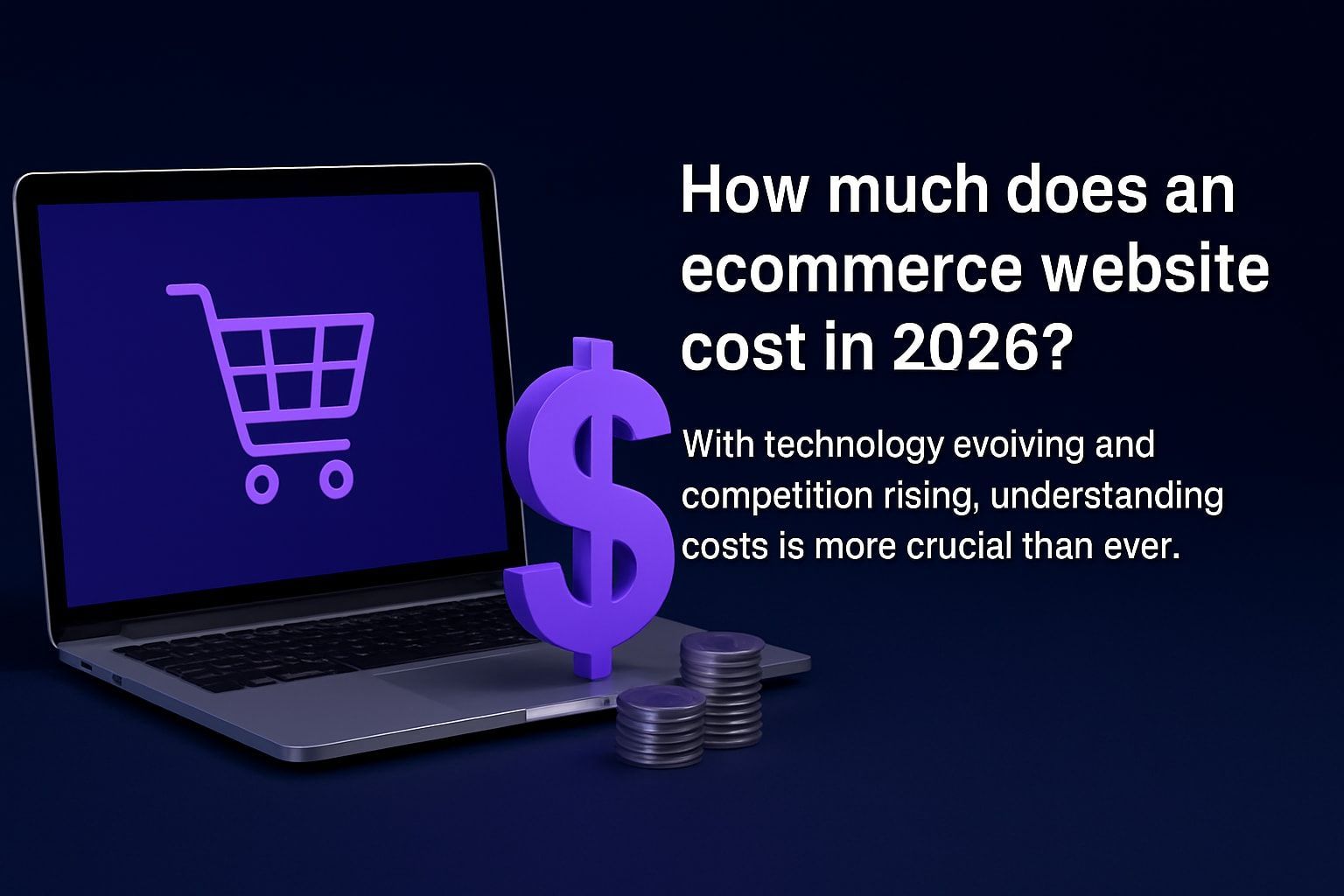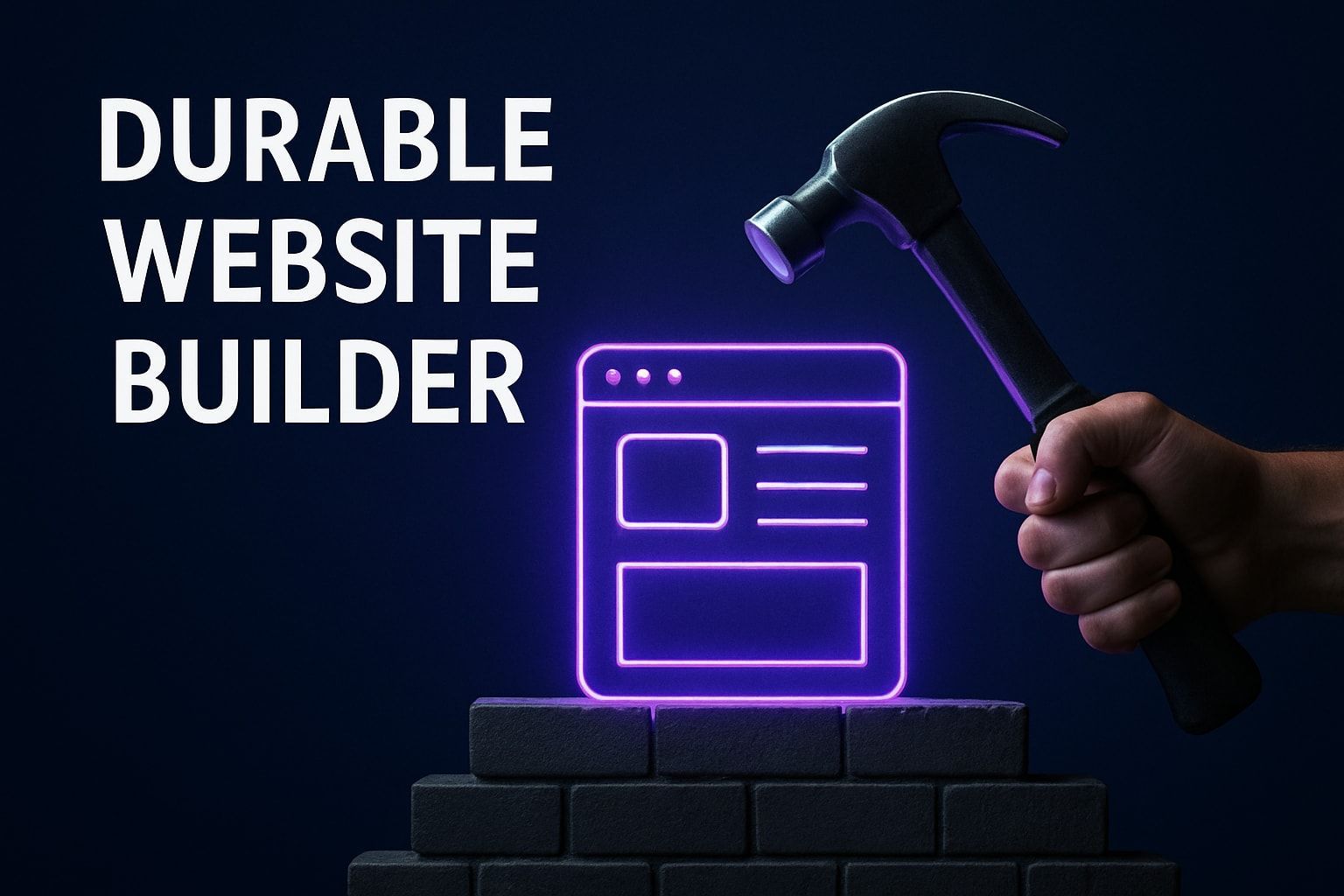Homepage Development Guide: Expert Insights for 2025
Homepage development is rapidly transforming as we approach 2025, becoming more crucial than ever for digital success. The bar is rising fast, with businesses recognizing that an effective homepage is their digital front door.
User expectations are evolving alongside advances in technology and a surge in online competition. Visitors now demand fast, seamless, and personalized experiences—setting new standards for what a homepage must deliver.
To stand out, brands need expert insights and proven strategies to create high-performing, future-ready homepages. It's not just about good looks; it's about functionality, speed, and strategic impact.
In this guide, you'll discover a step-by-step approach covering strategic planning, cutting-edge design, UX best practices, SEO, AI integration, and performance optimization. Get ready to transform your homepage into a powerful asset that drives results.
Understanding Homepage Fundamentals in 2025
The landscape of homepage development is evolving rapidly, and understanding its core fundamentals is key to building digital experiences that succeed in 2025. Modern homepages are no longer just digital front doors—they’re dynamic hubs that blend strategy, design, and technology.
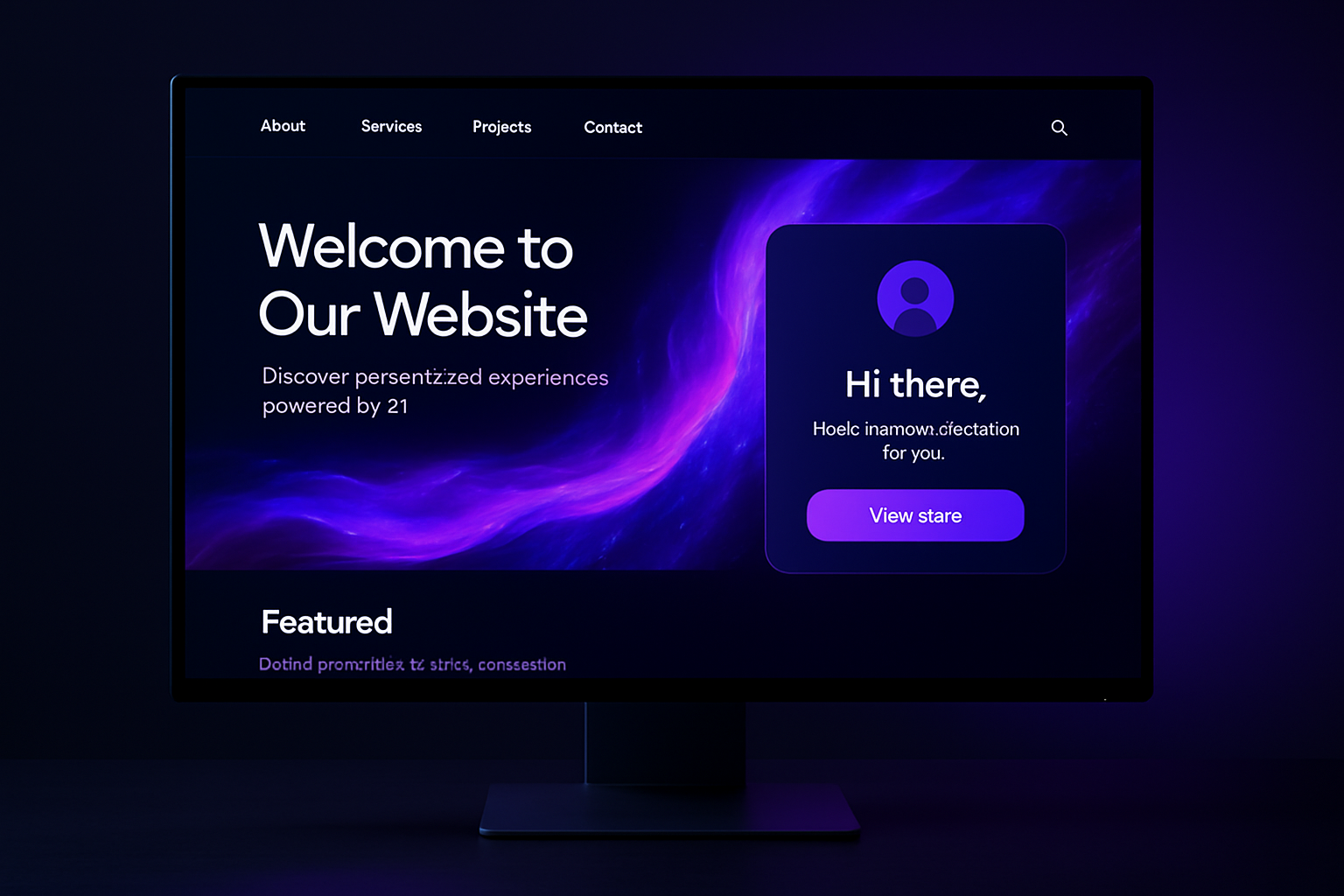
The Role of the Homepage in Modern Web Strategy
A homepage acts as the central hub for branding, conversions, and first impressions. It’s often the gateway to the full website experience, guiding visitors toward meaningful actions. In 2025, homepage development is about creating an impactful entry point that aligns with your brand’s goals.
Leading brands are investing in personalized homepage experiences, ensuring every interaction feels tailored. This strategic focus makes homepage development a critical driver of digital growth.
Key Elements Every Homepage Must Have
Successful homepage development starts with three essentials: a clear value proposition, intuitive navigation, and strong calls-to-action (CTAs). Placing critical content above the fold ensures visitors instantly understand your offer.
According to Stanford Web Credibility Research, 94% of first impressions relate to design. The table below highlights must-have elements and their impact:
| Element | Importance |
|---|---|
| Value Proposition | Clarity, engagement |
| Navigation | Usability, retention |
| CTA | Conversion, direction |
These fundamentals remain the backbone of effective homepage development.
Evolving User Expectations and Behaviors
User expectations are shifting fast. Mobile-first browsing dominates, and users want rapid access to key information. Homepage development must prioritize fast, responsive layouts to meet these needs.
Accessibility and inclusivity are no longer optional. With 74% of users more likely to return to mobile-friendly sites (Google), designing for all audiences is crucial. Modern homepage development embraces these principles for broader reach.
Homepage Trends for 2025
Homepage development in 2025 spotlights minimalism, micro-interactions, and immersive visuals. AI-driven personalization is at the forefront, shaping dynamic content based on user behavior.
For more on this, see AI-Powered Personalization in Web Design. Dynamic content blocks and subtle animations are becoming standard, making homepages more engaging and memorable.
Common Mistakes to Avoid
Many homepage development projects falter due to common missteps:
- Overloading pages with content
- Unclear or confusing navigation
- Slow load times
- Ignoring SEO or accessibility
A cluttered layout can lead to a significant drop in conversions. Focusing on simplicity and clarity is essential for high-performing homepage development.
Impact of Core Web Vitals and Performance
Google’s Core Web Vitals—Largest Contentful Paint (LCP), First Input Delay (FID), and Cumulative Layout Shift (CLS)—are now critical ranking factors. Homepage development must prioritize performance, as fast load times directly affect user retention.
Did you know 53% of mobile users abandon sites that take over three seconds to load (Google)? Optimizing homepage development for speed is no longer optional; it’s vital for success.
Step 1: Strategic Planning and Goal Setting
A successful homepage development project always begins with a clear plan. Setting a strong foundation in this first step ensures every subsequent decision aligns with your business vision and meets user needs. Let’s break down the essentials for building a future-ready homepage.

Defining Homepage Objectives Aligned with Business Goals
Before diving into homepage development, clarify what you want your homepage to achieve. Is your primary goal to generate leads, drive sales, or boost brand awareness? Setting measurable objectives helps you track success and adjust strategies as needed.
For example, a SaaS business might set a target of increasing free trial signups by 30% in the next quarter. These objectives should be SMART: Specific, Measurable, Achievable, Relevant, and Time-bound.
- Lead generation
- Direct sales
- Brand recognition
By aligning homepage development with business goals, you create a strategic path that guides every design and content choice.
Audience Research and Persona Development
Knowing your audience is the backbone of effective homepage development. Start by identifying your ideal users—their needs, pain points, and digital habits. Use surveys, interviews, and analytics to gather real insights.
Tools like HubSpot Persona Generator or Xtensio simplify persona creation, while journey mapping uncovers key touchpoints. According to Econsultancy, personalized homepages can increase engagement by up to 63%.
List of persona research methods:
- User interviews
- Analytics review
- Customer surveys
Well-defined personas ensure your homepage development resonates with real users, driving meaningful engagement.
Competitive Analysis and Benchmarking
Benchmarking is crucial in homepage development. Analyze top competitors to understand industry standards, spot opportunities, and identify gaps you can fill. Use platforms like SEMrush and SimilarWeb to gather data on traffic, features, and performance.
Study competitors’ homepages for elements like navigation, layout, and CTAs. Take notes on what works and what doesn’t. For instance, if leading brands use interactive demos on their homepages, consider how similar features could enhance your own offering.
Competitive analysis positions your homepage development for differentiation and long-term growth.
Content Planning and Messaging Hierarchy
Effective content planning is vital in homepage development. Organize your messaging so visitors quickly understand your value. Focus on clear headlines, concise subheadlines, and compelling calls to action.
Prioritize above-the-fold content—what users see first matters most. Use storytelling to connect emotionally and logically. Here’s a simple messaging hierarchy:
| Section | Purpose |
|---|---|
| Headline | State main value clearly |
| Subheadline | Expand on headline |
| CTA | Direct user action |
A thoughtful hierarchy keeps users engaged and guides them toward conversion.
Wireframing and Prototyping Best Practices
Wireframing is a critical step in homepage development. Start with low-fidelity wireframes to sketch ideas quickly, then move to high-fidelity prototypes for detailed layouts. Tools like Figma and Adobe XD enable real-time collaboration and feedback.
Early wireframing reduces costly development errors and speeds up iterations. Share prototypes with stakeholders to ensure alignment before moving into full design and build phases.
This approach saves time and ensures your homepage development stays on track.
Stakeholder Collaboration and Feedback Loops
Collaboration fuels successful homepage development. Involve marketing, design, and development teams from the start. Set up regular review cycles—weekly check-ins work well—to gather feedback and align on vision.
Use collaborative tools like Slack or Trello to track progress and action items. Encourage open communication, so all voices are heard and potential issues are addressed early.
With structured feedback loops, your homepage development remains agile, adaptive, and always focused on achieving business goals.
Step 2: UX/UI Design Principles for High-Impact Homepages
A high-impact homepage sets the stage for your entire website. As homepage development evolves, mastering UX/UI design is non-negotiable. Every detail—from layout to personalization—shapes user engagement and conversions.
Let’s break down the essential design principles for building a future-ready homepage that stands out in 2025.
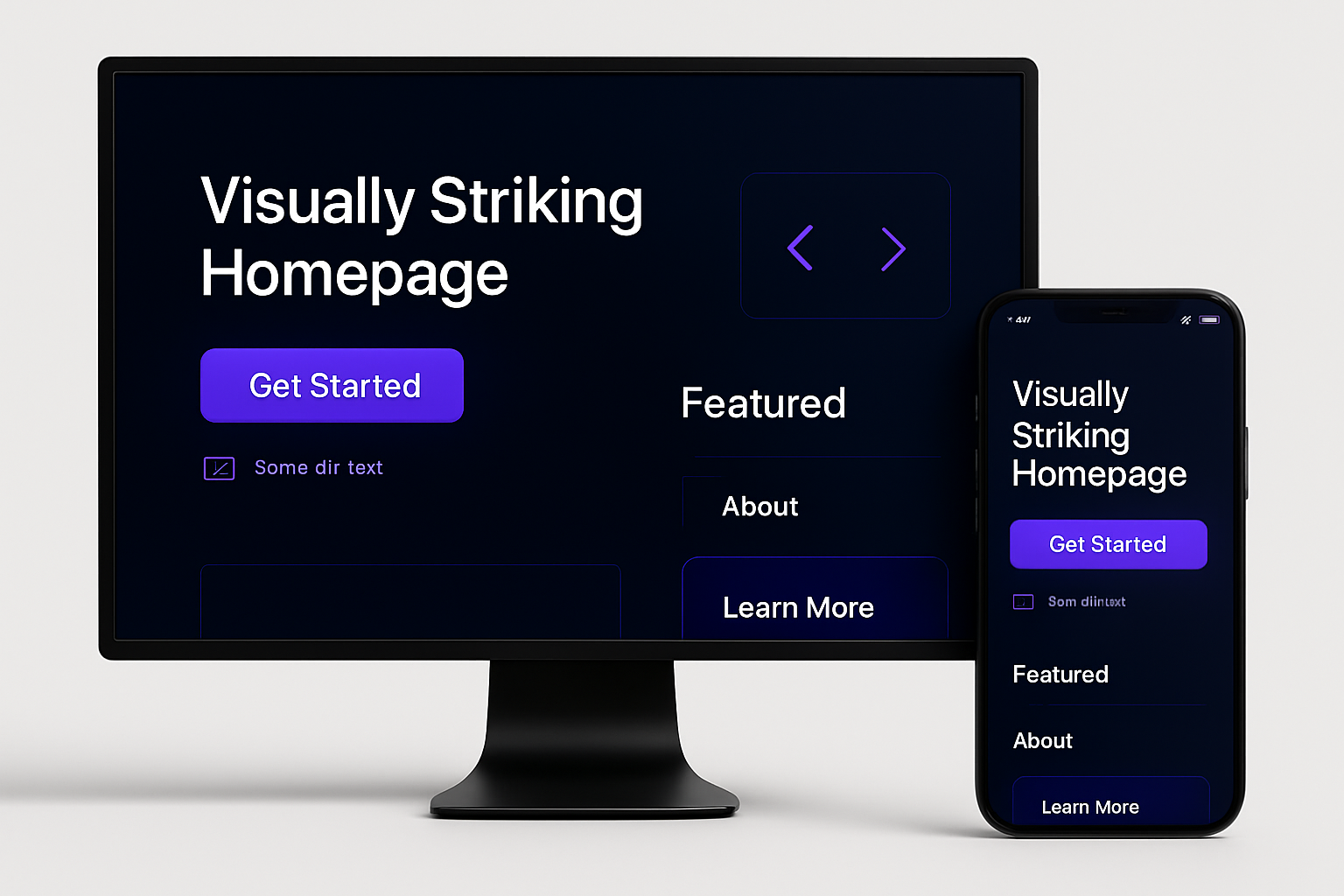
Visual Hierarchy and Layout Optimization
Effective homepage development begins with visual hierarchy. The right structure guides users’ attention, making navigation effortless and intuitive. Well-placed headings, strategic use of color, and thoughtful spacing all play a role.
Leverage the F-pattern or Z-pattern layouts, as users naturally scan pages in these shapes. According to NN Group, users spend 80% of their time viewing the left half of a page. Use bold headlines and contrasting CTAs above the fold to grab attention instantly.
A quick table for layout comparison:
| Layout Pattern | Best For | User Flow |
|---|---|---|
| F-pattern | Content-heavy | Left to right |
| Z-pattern | Simple, minimal | Top to bottom |
Prioritizing visual hierarchy in homepage development ensures users find key information without feeling overwhelmed.
Mobile-First and Responsive Design
With most users browsing on mobile devices, mobile-first design is now the gold standard for homepage development. Responsive layouts automatically adapt content to any screen size, ensuring a seamless experience.
Touch-friendly elements, like larger buttons and swipe gestures, are essential. Google reports that 61% of users are unlikely to return to a site that isn’t mobile-friendly. Test your homepage across devices to spot usability issues early.
Prioritize fast load times and intuitive navigation for mobile users. In homepage development, designing for mobile first not only meets user expectations but also improves search rankings and engagement.
Accessibility and Inclusive Design
Accessibility is a core requirement for homepage development in 2025. Following WCAG 2.2 guidelines helps ensure everyone, including those with disabilities, can use your site.
Focus on color contrast, readable fonts, and keyboard navigation. Use descriptive alt text for images and ensure all interactive elements are accessible. Accessible homepages not only expand your audience but also meet legal and ethical standards.
Consider this accessibility checklist for homepage development:
- Sufficient color contrast
- Keyboard navigable menus
- Text alternatives for images
- Logical heading structure
Inclusive design isn’t just about compliance—it’s about creating a welcoming digital experience for all.
Use of Imagery, Video, and Animation
Striking visuals can elevate homepage development, but balance is key. High-quality images, background videos, and subtle animations should enhance—not distract from—your content.
Optimize media files for fast loading to avoid performance issues. Use hero images that communicate your value instantly. For animation, opt for micro-interactions that guide users without overwhelming them.
Dark mode is a growing trend, offering both aesthetic appeal and accessibility benefits. To explore its evolution and best practices, check out this guide on Dark Mode Evolution in 2025.
Remember, in homepage development, every visual element should reinforce your message and support user goals.
Micro-Interactions and Personalization
Micro-interactions are the secret sauce in modern homepage development. These tiny animations or feedback cues—like button hover effects or loading spinners—make the experience feel more interactive and responsive.
Personalization takes this further. Use dynamic content blocks or smart CTAs that adapt based on user data. For example, welcoming a returning visitor by name or showing tailored offers can boost engagement.
Leverage AI-powered recommendations to surface relevant products or content. Micro-interactions and personalization together make homepage development more engaging and user-centric.
Consistency with Brand Identity
Consistency is the backbone of effective homepage development. Every element—from colors and fonts to tone of voice—should reflect your brand identity.
Use a cohesive color palette, clear logo placement, and messaging that aligns with your overall strategy. Consistent design builds trust and makes your website memorable.
Refer to your brand guidelines throughout homepage development. A unified look and feel not only strengthens your brand but also fosters recognition and loyalty among visitors.
Step 3: SEO and Content Optimization for 2025
Optimizing your homepage development for SEO in 2025 means blending cutting-edge techniques with tried-and-true fundamentals. Let’s break down the essentials you need to create a homepage that stands out in search, delivers value, and adapts to evolving digital trends.
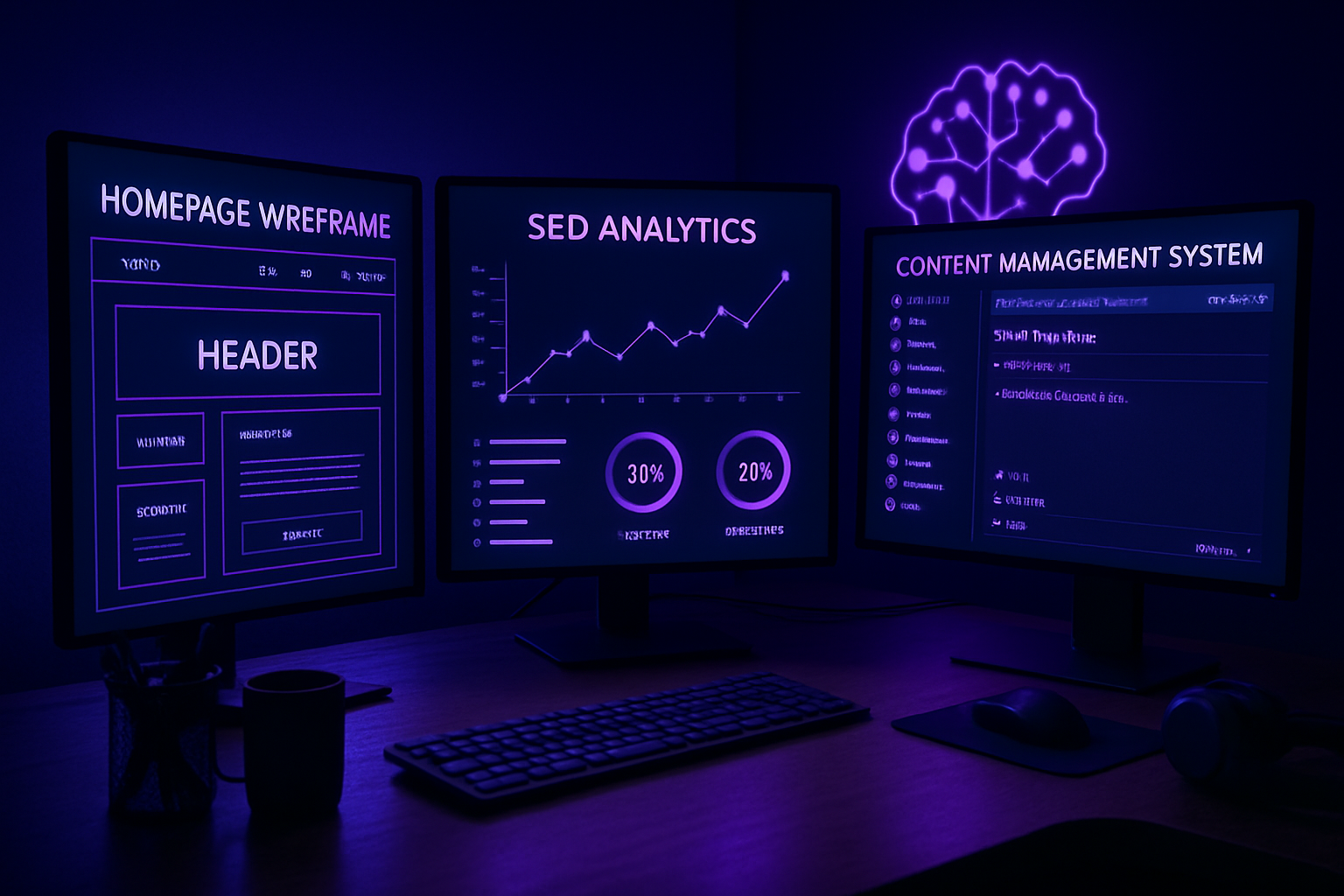
On-Page SEO Essentials for Homepages
Start homepage development by mastering on-page SEO basics. Ensure every homepage uses a unique title tag, a compelling meta description, and a clear header structure. Incorporate primary and secondary keywords naturally within your content to boost relevance.
Above-the-fold content should grab attention and provide immediate value. Use descriptive, keyword-rich headings and engaging copy to encourage users to stay.
A well-optimized homepage development project can see significant ranking improvements just by focusing on these core elements. Use tools like Google Search Console to monitor performance and adjust as needed.
Structured Data and Schema Markup
Structured data is transforming homepage development by making content more understandable for search engines. Use schema markup to highlight key information like your organization, breadcrumbs, and FAQ sections.
This not only improves visibility in rich search results but also increases click-through rates. According to Search Engine Land, implementing schema can boost CTR by up to 30%.
For homepage development, focus on the most relevant schema types. Here’s a quick comparison:
| Schema Type | Purpose |
|---|---|
| Organization | Brand info, logo, contacts |
| Breadcrumb | Navigation clarity |
| FAQ | Answers to common questions |
Regularly validate your markup using Google’s Rich Results Test.
Content Freshness and Dynamic Updates
Keeping your content current is crucial for homepage development in 2025. Fresh content signals to search engines that your site is active and relevant. Update headlines, banners, and featured products regularly.
Leverage AI tools to automate content updates, ensuring your homepage reflects the latest news, offers, or launches in real time.
Dynamic content blocks are becoming the norm in homepage development. They allow you to personalize messaging and showcase new content without a full redesign. This approach keeps your homepage engaging and timely.
Internal Linking and Site Architecture
Effective internal linking is foundational for homepage development. Guide users and search engines to important sections by linking to key product, service, or blog pages from your homepage.
A logical site architecture, often called a silo structure, helps distribute authority and improves indexability. Use clear navigation menus and contextual links within your homepage content.
For homepage development, prioritize paths that make sense both for users and search engines. Review your internal linking strategy regularly to spot opportunities for optimization and growth.
Image Optimization and Media SEO
Media assets play a vital role in homepage development, but unoptimized images can hurt performance. Compress images to reduce file size without sacrificing quality. Use descriptive alt text for every image to boost accessibility and SEO.
Implement lazy loading so images load only when visible, speeding up initial page load times. According to recent data, optimized images can improve page speed by up to 40%.
Always ensure your homepage development process includes a media SEO checklist. This way, visuals enhance rather than hinder your site’s performance and rankings.
Step 4: Integrating AI and Advanced Technologies
Artificial intelligence is revolutionizing homepage development, making it possible to deliver smarter, more intuitive user experiences. As we look toward 2025, integrating advanced technologies is no longer optional—it's essential for creating high-performing, future-ready homepages.
AI-Powered Personalization and Recommendations
Personalization sits at the heart of next-gen homepage development. AI analyzes user data in real time, allowing sites to deliver tailored content, recommendations, and offers. Imagine a homepage that changes dynamically based on user behavior, location, or even time of day.
Leading brands use AI to predict what users want before they ask. This approach not only boosts engagement but also drives conversions. In fact, personalized homepage development can increase conversion rates by over 200%. For 2025, expect even deeper personalization powered by smarter algorithms.
Chatbots, Virtual Assistants, and Interactive Features
AI-driven chatbots and virtual assistants are now standard features in effective homepage development. These tools offer instant support, answer FAQs, and guide users through complex journeys. Whether it's capturing leads or helping with product recommendations, interactive AI features drive engagement.
Modern chatbots can handle natural language, provide personalized answers, and even escalate to human agents when needed. For homepage development teams, integrating these elements means more satisfied users and higher retention rates.
Automation in Content Creation and Design
Automation is streamlining homepage development at every stage. AI tools now generate copy, suggest layouts, and even select images based on user preferences. This not only speeds up the process but also ensures consistency and relevance.
Recent research, such as the Automated UI Interface Generation via Diffusion Models study, highlights how AI can automate interface design, reducing manual work and enabling rapid prototyping. With automation, homepage development becomes more efficient, freeing creative teams to focus on strategy and innovation.
Security and Privacy Considerations
With more AI comes greater responsibility in homepage development. Users are increasingly concerned about data privacy and how their information is used. Compliance with GDPR, CCPA, and other regulations is non-negotiable.
Best practices include transparent privacy policies, clear consent mechanisms, and robust data protection protocols. By prioritizing security and privacy, homepage development teams build trust and ensure long-term user loyalty.
Future-Proofing with Emerging Tech
Homepage development is set to evolve even further with the rise of AR, VR, and voice search. Early adopters are already experimenting with voice-activated navigation and immersive homepage experiences.
Staying ahead means keeping an eye on these trends and being ready to integrate new technologies as they mature. Future-proofing your homepage development strategy ensures you remain competitive and relevant in a rapidly changing digital landscape.
Step 5: Performance Optimization and Analytics
Optimizing performance and analytics is essential for homepage development in 2025. Users expect lightning-fast load times and flawless interactions across devices. Brands that prioritize speed and data-driven improvements set themselves apart in a crowded digital space.
Core Web Vitals and Speed Optimization
Performance is no longer optional in homepage development. Google’s Core Web Vitals—Largest Contentful Paint (LCP), First Input Delay (FID), and Cumulative Layout Shift (CLS)—directly impact rankings and user retention. Monitoring these metrics is critical.
| Core Web Vital | What It Measures | Ideal Threshold |
|---|---|---|
| LCP | Loading performance | ≤ 2.5 seconds |
| FID | Interactivity | ≤ 100 milliseconds |
| CLS | Visual stability | ≤ 0.1 |
Tools like Google PageSpeed Insights and Lighthouse help diagnose and resolve issues quickly. According to Google, 53% of mobile users abandon sites taking over three seconds to load. For an in-depth look at these metrics, check out Core Web Vitals and Performance Optimization.
Caching, CDN, and Image Delivery Strategies
Effective homepage development uses caching and CDNs to deliver content globally with minimal latency. Browser caching ensures assets are stored locally for repeat visitors, boosting return speed.
CDNs distribute your homepage assets to servers closer to users, slashing load times by up to 50%. Image optimization—compressing files, using next-gen formats, and enabling lazy loading—reduces bandwidth and enhances user experience.
- Implement browser caching for static assets.
- Use a CDN for global asset delivery.
- Optimize and serve images in WebP or AVIF formats.
Prioritizing these strategies keeps your homepage development agile and future-proof.
Mobile Performance and Progressive Web Apps (PWAs)
Mobile-first is non-negotiable in homepage development. Users expect seamless experiences on every device. Progressive Web Apps (PWAs) offer fast, app-like performance, even offline.
Brands adopting PWAs have reported up to 70% increases in engagement. Focus on responsive layouts, touch-friendly navigation, and minimized JavaScript for speed. PWAs also enable push notifications, adding another layer of user connection.
To stay ahead in homepage development, ensure your homepage loads quickly and functions flawlessly on all mobile devices.
A/B Testing and Conversion Rate Optimization (CRO)
Continuous improvement is pivotal for homepage development success. A/B testing lets you experiment with headlines, calls-to-action, and layouts, uncovering what truly resonates with your audience.
Tools like Google Optimize and Optimizely streamline this process. Even minor tweaks can lift conversion rates by 20–30%. Test only one variable at a time for clear insights.
- Test CTA placement and color.
- Experiment with headline messaging.
- Analyze results and iterate.
A data-driven approach to homepage development ensures your homepage evolves with user needs.
Analytics and Continuous Improvement
Tracking and analyzing user behavior is the backbone of effective homepage development. Google Analytics and Hotjar provide insights into user journeys, bounce rates, and interaction patterns.
Heatmaps visualize where users click, scroll, or drop off. Use these insights to refine homepage layouts and prioritize high-impact content. Set up regular review cycles to implement findings and drive ongoing improvements.
Homepage development is never truly finished. Embrace analytics for a cycle of testing, learning, and optimizing, keeping your homepage ahead of user expectations.
Now that you’ve got the expert insights and step-by-step strategies for crafting a standout homepage in 2025, why not put these ideas into action? With Avantiy’s AI-powered tools, customizable templates, and easy drag-and-drop editor, you can bring your vision to life—no coding needed. Whether you’re building a business site, online store, or personal portfolio, you’ll have everything you need to launch fast, look professional, and get noticed online. Ready to see how simple and powerful homepage development can be?
Start Building Your Website Today
Start building your new website today
No credit of debit card required start building today



